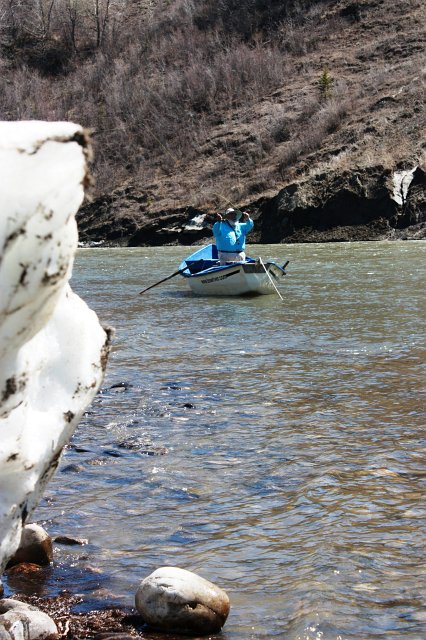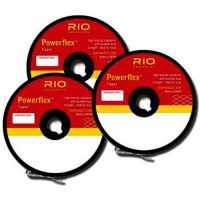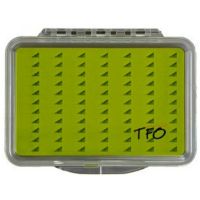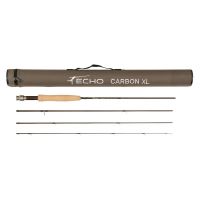Like anticipating the first crocus of spring - or the welcome sight of the returning crows and Canada geese - the ice-free seasons can't come soon enough for western anglers.
Sure ice angling has its appeal. And thanks to the intervention of man there are tailwaters below dams, power-plant warm water discharges and Chinook-caressed mountain rivers that provide the hearty among us the opportunity to wet a line even in the depths of winter. Or the alternative, cashing in your airline reward points and taking a sun-splashed winter getaway to some tropical bonefish paradise. All that's more to do with temporarily staving off your obsession, not satisfying a serious deficit in your lifestyle. You need a healthy dose of break-up medication to make those urges go way. But once the open water season arrives, you can be confronted with an overwhelming anxiety of what to do. There's suddenly so many choices and so little time.
Here's a check-list of things to do to get the fishing monkey off your back.
Develop a Bucket List
In the winter months outdoors on-line chat rooms often feature long discussions about fishing plans and angling destinations once the warm weather arrives. Sometimes it's just idle chatter to fill in the down-time. For others it's a great way to imagine the possibilities. But don't stop there.
Go ahead and develop a personal Bucket List that can be activated once the ice is gone and rivers return to their post run-off levels. There are only so many weekends during our short summer. Even if you extend your angling into the shoulder seasons the opportunities are anything but limitless.
Add in a summer vacation where you may want to travel out-of-province and suddenly summer seems over even before it has begun. So plan ahead. Make a list of old favorite rivers and lakes you want to visit again. Add to that some of those "I want to fish before I die" spots. Throw in a few of those little-blue-lines-on-a-map places too. Ones you may have driven over dozens of times heading for somewhere else and always asked yourself, "I wonder what's up there?"
Or discovered while pouring over topo maps and Google Earth on long, cold January nights in anticipation of next summer's adventures. If you have access to the mountains and foothills, figure out which ones fish better early in the season and the creeks and rivers better left until late July and August. These are usually a function of altitude. But sometimes latitude - especially with the northern boreal Arctic grayling rivers - can be a determining factor in your success rate.
It can be as simple or complex as you want it to be. It's your list, right? It's a good way to remind you that 18 hours of sunlight may feel like the endless summer. But come the middle of October it's all going to end.
Back it Up
You know what they say about western weather. If you don't like it wait five minutes and you will probably like it even less. Blow-out rainstorms - which likely as not coincide with the four long weekends of summer - have ruined the best laid plans of anglers more times than you can count. Even if the rain doesn't raise the foothills creeks and rivers into the willows, cold fronts and heat waves can radically change the way trout, pike and walleye feed. The same goes for the insects and other species they feed on. Reading weather forecasts, of course, is a no brainer. But also have a back-up plan ready.
If the trout stream you are headed for is running the colour of chocolate dairy drink, is there a still water or a spring creek nearby that can save your fishing day? Water flows only a drainage away can vary dramatically. Once you had to rely on hearsay and personal observations of friends and other anglers. Often dated and not necessarily reliable.
Now provincial environmental departments take much of the guess work out of it and have saved many a lost weekend and wasted tank of gas. Water, especially that which flows east from the Rocky Mountains, is a precious commodity. Governments track its movement from source to confluence through a complex network of stream gauges which are displayed in realtime - along with historical flow averages - on environment department websites.T hese measuring stations are also present on controlled rivers like the North Saskatchewan, Deer and Bow where dam discharges sometimes bear little relationship to natural conditions.
The Dam Man can easily become that Damn Man when the tailwater you planned on fishing has overnight become a sluice of cold, gray reservoir water. It's always a good idea to have a Plan B in mind before you leave the house. Because chances are, a few times this summer you're going to need it.
Check Your Equipment
It may not be totally true that an angler is only as good as his equipment. There's still a lot of that classic calendar art around depicting an old geezer with a grand's worth of fly-fishing equipment hanging off him buying a couple of trout from the kid with a willow stick. But there have also been many a fishing trip ruined because anglers grabbed their gear of the peg in the basement where they left it last fall only to discover that some vital piece of outfit was either no longer where they though it was. Or busted.
Before you head out, invest in the five minutes or so it takes to check it out. Examine rods to make sure the line guides are still in place and the ferrules and reel seat works. Go through flies and lures to make sure you still have a good supply of the patterns you expect to encounter on the water. An emergency fly-tying session may be required. Make sure the right flyboxes are in the correct vest pocket. Also how many times have anglers reached into their vest to discover the spool of 4X tippet material is in reality an empty spool. Same goes for fly floatant and desiccant.
A wonky reel can also ruin a weekend get-away. Clean and apply a dab of fresh reel grease. Check the butt plate screws to make sure they are tight. Pull the line off the reel and stretch it overnight to get out all the memory and kinks that built up over winter. The same goes for leaders.
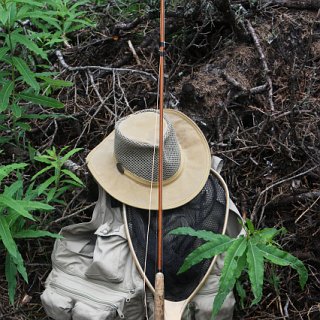

They say nothing is inevitable like death, taxes and leaky waders. All waders will inevitably take on water. But slathering worn seams, rub points and barbed-wire nicks with sealant can often put off the inevitable for at least another season. A little preparation can also prevent a cold, wet, uncomfortable weekend when your breathables suddenly become a kitchen sieve. Wading Boot laces (remember the one you broke last October during a Blue Winged Olive Hatch on the Red Deer River tailwater?) should also be replaced before heading out. Also check out the boots for a felt sole that may have mysteriously come loose in the closet last winter.
Being three hours from the nearest fly shop is the last place you want to discover your outfit won't fish.
Relax and Enjoy
Remember, one of the sacred trusts of any fishing trip, is what will be will be.
As much as I admire the guys who go down the Western Walleye Trail and compete many summer weekends for big money, or the manic Czech-nymphers who enter the Canadian Fly-fishing Championships, the purpose of a good day on the water this summer is NOT to compete. Leave the rat race behind for a few hours on a sunny Saturday afternoon where your only care in the world is whether that big brown trout rising by a log jam will take your Green Drake Mayfly.
For every once-in-a-lifetime fishing trip, there's usually one coming right around the bend where which becomes the Highway to Hell. Whatever can go wrong will go wrong. But even then is usually better than an average day at the office.
You can't really anticipate fish. Only be ready to react when whatever you are doing and the activities of the fish temporarily coincide. Sometime for an entire afternoon and evening. Often it only lasts a few minutes when you can say you've truly got it nailed. But that's why they call it fishing. Not catching.
Deal with the problems and solutions you can control. The trout, grayling, pike and walleye will soon let you know if you've got it right.
